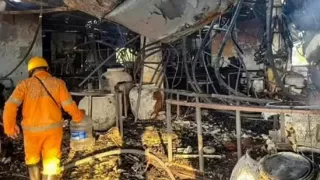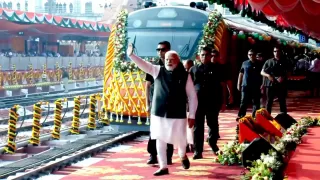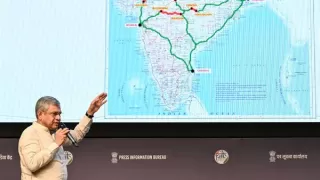Railways have always represented the backbone of industrial progress, but a few exceptional trains have taken this concept to staggering extremes. The longest and heaviest trains ever built were not ordinary freight movers—they were monumental experiments in engineering precision, logistics, and endurance. These titanic machines stretched across miles of track, their sheer size demanding advanced control systems and remarkable synchronization to move safely and efficiently. Each of them tells a story of human ambition, innovation, and the relentless pursuit of efficiency in heavy-haul transportation.
Unlike passenger expresses or scenic routes, these trains were built for one purpose—hauling colossal quantities of bulk commodities like iron ore and coal across remote, demanding landscapes. Managing such enormous weights required cutting-edge traction control, real-time communication between locomotives, and infrastructure built to withstand immense stresses. The two longest of these trains were record-breaking experiments, while others served in routine commercial operations, proving that the extreme can be made practical.
From Australia’s dusty Pilbara iron corridors to China’s state-of-the-art coal arteries, the following five trains stand among the greatest mechanical achievements in rail history. They are ranked here from fifth to first—not just by their length, but by the technical ingenuity and determination that made them possible. Together, they represent humanity’s ongoing quest to move more, faster, and farther than ever before.
5. Shuozhou–Huanghua Railway (China)
In April 2024, China made headlines by testing one of the most advanced heavy-haul freight trains in its history along the Shuozhou–Huanghua Railway. The train stretched more than 4 kilometers and consisted of 324 coal wagons, pulled by four high-powered electric locomotives. Its combined load exceeded 30,000 tonnes, marking a new era for Chinese freight operations. This experiment was part of the country’s continuous effort to modernize bulk logistics and reduce carbon emissions by optimizing rail transport instead of relying on trucks.
The success of this trial lay not just in its size, but in its technological sophistication. Engineers employed distributed power systems, allowing locomotives to be positioned both at the head and mid-train, communicating wirelessly in real-time. This approach balanced traction and braking forces evenly across the massive formation, reducing stress on couplers and improving overall safety. Advanced braking algorithms ensured that all wagons responded simultaneously, preventing sudden jerks or derailments that could occur in conventional systems.
Beyond its immediate record-setting nature, the Shuozhou–Huanghua trial symbolized China’s growing dominance in heavy freight innovation. It demonstrated that with the right infrastructure and digital integration, ultra-long trains can operate reliably and economically. The experiment also laid the groundwork for future long-haul, high-capacity freight lines in China—especially those designed to move energy resources from inland provinces to industrial coastal hubs with minimal environmental impact.
4. Ekibastuz–Urals Coal Train (Soviet Union)
On February 20, 1986, the Soviet Union tested one of the world’s longest and heaviest coal trains between Ekibastuz and the Ural region. The massive formation measured around 6.5 kilometers in length and consisted of 439 wagons carrying over 43,000 tonnes of coal. This project was part of the Soviet effort to increase energy transport efficiency from Kazakhstan’s rich coal basins to industrial centers deep within the USSR. It showcased the country’s technical prowess during a period when large-scale rail operations were key to economic strength.
Managing such a gigantic train posed extraordinary logistical and mechanical challenges. Engineers had to consider coupler strength, braking coordination, and the thermal effects on steel rails caused by prolonged stress. The locomotives, strategically placed and operated through synchronized commands, pulled and pushed thousands of tons of cargo across long, isolated stretches of steppe. Despite limited access to advanced computerized controls at the time, Soviet railway engineers achieved remarkable coordination using analog communication and manual timing techniques.
The success of this train not only broke records but also offered valuable insights into how rail infrastructure could be improved for long-term efficiency. It paved the way for the modernization of Soviet freight systems and inspired subsequent designs in heavy-haul operations worldwide. Even decades later, the Ekibastuz–Urals run remains a legendary example of human ingenuity under technological constraints, proving that determination and planning can overcome even the most formidable physical challenges.
3. Norfolk and Western Railway (United States)
In 1967, the Norfolk and Western Railway conducted a groundbreaking experiment to test the absolute limits of coal transport in the United States. The result was a 6.5-kilometer-long train, composed of 500 cars and pulled by six powerful EMD SD45 diesel-electric locomotives. The combined weight of this formation reached nearly 48,000 tons, a scale never before attempted on American rails. The test was designed not for publicity, but to collect data on the feasibility of operating ultra-long, high-tonnage unit coal trains across the Appalachian region.
This experiment served as a critical milestone in understanding how distributed traction could be applied to heavy-haul railways. Engineers studied air brake performance, coupler durability, and the stability of long trains on curved track segments. The operation also revealed the limits of conventional coupling systems, which struggled under massive tensile loads, leading to innovations in reinforced couplers and buffer designs. The insights gained from this trial were later used to improve safety and reliability across U.S. freight rail systems.
Although the train itself never entered regular service, its legacy was significant. It proved that large-scale coal transportation could be made more efficient through advanced mechanical design and improved coordination. This experiment laid the groundwork for the modern “unit train” concept—dedicated long-haul freight services that revolutionized how bulk commodities like coal, grain, and ore are moved across North America today.
2. Sishen–Saldanha Railway (South Africa)
Between August 26 and 27, 1989, South Africa achieved one of the most remarkable feats in railway engineering on the Sishen–Saldanha iron ore line. The train stretched an astonishing 7.3 kilometers and included 660 wagons powered by 16 locomotives. Carrying more than 71,000 tonnes of iron ore, it set a new global benchmark for narrow-gauge railways. The achievement was not only a technical record but also a symbol of how innovative planning could push the limits of existing infrastructure.
To make the operation possible, engineers utilized distributed power systems long before they became common in freight operations. Locomotives were positioned throughout the train, and radio coordination was used to synchronize traction and braking. The challenge was to ensure that the enormous load could navigate gradients and curves safely while maintaining uniform speed. This delicate balance required precise real-time adjustments to prevent any single locomotive group from exerting excessive force on couplers or braking systems.
The success of the Sishen–Saldanha run transformed global perceptions of what narrow-gauge railways could achieve. It demonstrated that even smaller track gauges could support ultra-heavy, ultra-long trains when paired with advanced control systems and disciplined operations. This milestone not only strengthened South Africa’s iron ore export capabilities but also influenced heavy-haul designs worldwide, becoming a reference point for future engineering projects in similar environments.
1. BHP Iron Ore (Australia)
On June 21, 2001, the mining company BHP operated what remains the longest and heaviest train ever assembled in the world. Running along the Mount Newman railway in Western Australia, this iron ore train stretched an unbelievable 7.35 kilometers—longer than 70 football fields—and consisted of 682 wagons hauled by eight massive GE AC6000CW diesel-electric locomotives. The total cargo weight exceeded 82,000 tonnes, and the full train weighed nearly 100,000 tonnes when loaded, setting a record that has never been surpassed.
The operation was a complex ballet of technology, logistics, and endurance. Locomotives were strategically distributed along the train and controlled through advanced radio systems to maintain synchronized pulling and braking forces. The journey, covering roughly 275 kilometers to Port Hedland, took over 10 hours to complete through harsh desert conditions. Engineers faced challenges such as high temperatures, sand interference, and mechanical strain on couplers and axles, yet the train performed beyond expectations, completing its journey safely.
The BHP record was more than just an engineering triumph—it symbolized the future of industrial-scale rail transport. It showcased how automation, distributed traction, and digital control could transform efficiency on a massive scale. The data collected from this run influenced heavy-haul railways around the world, from Africa to North America, and remains a touchstone in rail history. Even decades later, no other train has matched its combination of length, weight, and flawless execution, securing its place as the ultimate giant of global rail engineering.
Also Read: Top 10 Biggest Indian Companies by Market Value in 2025




























